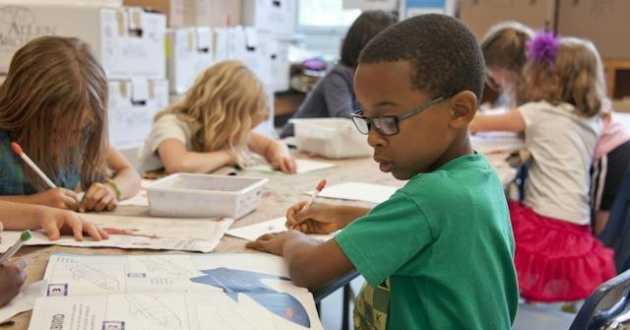The Right Approach To Early Childhood Education
- - Category: Childhood Education
- - 04 Jan, 2021
- - Views: 967
- Save
There are various approaches towards early childhood education, we recommend following Waldorf’s approach, here' why..
Early childhood is an ideal time for children to get comfortable with education. The right preschool and school approach should not only help your child grow but also learn in ways that best suit their unique mind. The next question on your mind as a parent would be, How do you know which one is right? With an ample number of schools opening up in your vicinity, you must understand each one of them follows a different approach to teaching. Every approach followed by these schools today is slightly direct as they add their own unique touch to the approach.
There are various approaches towards early childhood education like Montessori, Reggio Emilia approach, HighScope, etc. But, we recommend following Waldorf’s approach to early childhood education because of its minute detailed elements. Also, the advantages of Waldorf’s approach system has an upper hand compared to the above-mentioned approaches.
Critical Elements of the Waldorf Approach:
The main elements of Waldorf early childhood education system are:
- It is believed to be a warm, comfortable and loving learning environment for your child. Here activities and projects happen in a rhythmic way and which makes the child feel secure and protected.
- In this approach, the teacher starts with easy imitation activities making the child feel motivated. For example activities like cooking, baking, cleaning, painting and gardening are picked up first to build liking among the students for learning.
- Additionally, a child’s imagination power is ignited by carefully choosing stories that encourage role-play. These stories help a child to experience, learn and understand various aspects of life.
- Waldorf syllabus program uses day to day elements collected by children themselves as toys. Example: cotton, wood, wool, beads, shells, paper, stones and other natural objects. This makes the children independent and responsible.
- Activities as also based on gross motor and eye-hand coordination making it a proud moment for the child once goals are achieved.
Advantages of Waldorf Early Childhood Education:
- Warm environment: Elements of love and emotions create the basis for the child’s healthy development. These qualities are critical between a teacher and a child, as this will help them behave aptly with peers in class.
- An environment that ignites the Senses: The most critical role of a school teacher is to create a healthy physical environment around her class children. Though materials involved during the process of teaching are also important furthermore the environment perceived by their senses is equally of importance. In early childhood, everything a child’s senses are very curious to learn with experiences. What a child sees, hears and touches has an effect and hence teach in Waldorf’s approach ensures the experiences are pleasant. A teacher hence here sets a strict schedule of activities. I.e. the same thing happens at the same time on a daily, weekly or monthly basis. By preparing this rhythmic schedule makes the child develop a sense of security and confidence. However, if the daily schedule is going through a change the teacher ensures a smooth transition to avoid discomfort in the children.
- Artistic and creative experiences are encouraged: The teacher incorporates creative learning by using aids like stories, poetry, puppet shows, etc. keeping the excitement in the classroom high. Also, the teacher offers opportunities for artistic experiences like painting and colors using watercolors and wax crayons. Recently singing, music, gestures, movements through rhymes and language are also encouraged in this approach of education.
- Imitation of activities: It’s a proven fact that children learn more through imitation rather than instructions. The teacher makes the children feel warm but attacking enjoyable daily activities like cooking, baking, gardening, cleaning, caring for materials around, etc.
- Free playtime: Little children can learn best through play where they don’t realize they are learning while they are enjoying. The dominant task for the teacher is to create an environment that supports the possibility of healthy play and learning. This can be done with the use of physical surroundings, play materials, social interactions and other co-teachers.
- 3 Golden gratitude words: in this warm and nurturing environment your child is exposed to an atmosphere of gratitude and respect. This often is demonstrated by the teachers via role play. When the child looks at the teachers showing gratitude and respect, they imitate gestures and words. Greeting adults with a “Good Morning”, saying ‘Thank you’ and “Sorry” are the 3 golden gratitude words that are emphasized in this approach of education.
- Happy environment: Lastly, the teachers ensure whatever happens in class is pleasing and makes the children happy. They make it a point to share some light moments where both teacher and children have a hearty laugh together. This fosters the joy of learning among children and helps them understand the lighter side of every situation.
Food for thought:
Before you choose the right school for your child do consider reading up on the approach they use dominantly. 5 Things to consider before choosing the right school for your child may help you make a more informed decision.


